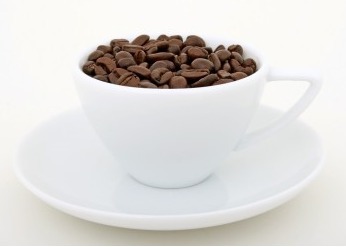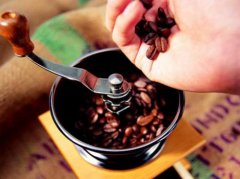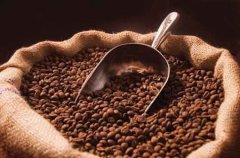Colombian Coffee introduction Fine Coffee recommended Colombian Coffee Taste characteristics Colombia
The Colombian Coffee producers Association (Federacion Nacional de Cafeteos de Clolmbia), known as [FNC] for short in the industry, introduced the two main varieties of Colombian coffee, Kaddura and Colombia.

Kaddura, which was introduced from Brazil in the 1960s, now accounts for 45-50% of the country's output and has replaced the earliest Tibica.
The new breed [Colombia], which has the same name as Colombia, is a mixed-race coffee developed in the 1980s, with Kaddura and Timo ancestry, that is, the notorious Katim, but [FNC] insists that although Colombia is a direct line of Katim, its flavor is far more elegant than that of ordinary Kadim, because Colombia has washed away the moldy smell of strong beans after generations of "reverse hybridization" with Arabica, and the flavor is more like Arabica. It also has the advantages of disease resistance and high yield of stout beans, which is a sharp weapon for Costa Rica to increase production.
At present, most of the Colombian manors adopt the mixed mode of 70% Kaddura and 30% Colombia, and the delicious Dibica has disappeared.
The overall coffee variety configuration in Colombia is roughly 50% in Kaddura, 30% in Colombia and 20% in Tibica.
With rich landforms, low latitudes and high elevations, Colombia has excellent conditions for the growth of boutique coffee.
The Costa Rican coffee area, located between three and eight degrees north latitude, is a low-latitude coffee belt. It can be harvested twice a year, and ripe coffee can be harvested almost every month from south to north.
Large-scale enterprise coffee farming land is distributed in the central and northern parts of China, and it is the main producing area of commercial beans, including the three major producing areas with a long history in the middle, such as Medeine, Amenia and Medillin,Armenia,Manizales, commonly known as [MAM]. It has a strong sour taste and typical Central American flavor.
But Bucaramanca in the northeastern province of Santander is known for its low sour and bitter flavor, similar to Indonesia's Mantenin flavor, probably related to an altitude of only 960m (low altitude, low acidity, always good). Bucamanca's beans are interesting, unlike the familiar Colombian flavor. Although they are soft beans, they are full-bodied, and they don't taste like [MAM] beans with dead acid and no depth.
Costa Rica's boutique bean producing areas are mainly in the south, more than 1500 meters above sea level, including St. Augustine (San Augustin,Huila) in Vera, Popayan,Cauca (Popayan,Cauca) in Cauca, Narino (Narino), and Tolima (Tolima), with delicate sour and raspberry aromas and caramel aromas.
When buying Costa Rican beans, don't think that the highest [Supermo] of 17-18 mesh must be delicious. Be sure to check which producing area the beans come from. If the producing area is not specified, it is mostly commercial beans of [MAM], because the southern boutique producing areas will indicate the provinces and place names, so as to distinguish them.
Important Notice :
前街咖啡 FrontStreet Coffee has moved to new addredd:
FrontStreet Coffee Address: 315,Donghua East Road,GuangZhou
Tel:020 38364473
- Prev

Ecuadorian Coffee introduces boutique coffee beans from the equator Ecuadorian coffee characteristics Ecuador melon
Most countries in the world are rich in only one kind of coffee beans, while Ecuador is one of the few countries in the world that can produce both Arabica coffee beans and Robusta coffee beans. The Ecuadorian Coffee tasting, sponsored by the Consulate of Ecuador in Guangzhou, was recently held at the Art Cafe in the Guangdong Provincial Museum. Organic beans, flowers and fruits, caramel smell to the nostrils according to the melon
- Next

Panamanian Coffee growing Highland Coffee absolutely High quality Panamanian Coffee
Panama coffee is smooth, light and sour, and its high-quality coffee beans are pure and distinctive. The first batch of coffee exported each year is shipped in November, and almost all high-quality coffee beans are shipped to France and Finland. The finest coffee is grown in the north of the country, near Costa Rica and the Pacific Ocean. Chiriqui province Bocket (Boque)
Related
- Does Rose Summer choose Blue, Green or Red? Detailed explanation of Rose Summer Coffee plots and Classification in Panamanian Jade Manor
- What is the difference between the origin, producing area, processing plant, cooperative and manor of coffee beans?
- How fine does the espresso powder fit? how to grind the espresso?
- Sca coffee roasting degree color card coffee roasting degree 8 roasting color values what do you mean?
- The practice of lattes: how to make lattes at home
- Introduction to Indonesian Fine Coffee beans-- Java Coffee producing area of Indonesian Arabica Coffee
- How much will the flavor of light and medium roasted rose summer be expressed? What baking level is rose summer suitable for?
- Introduction to the characteristics of washing, sun-drying or wet-planing coffee commonly used in Mantenin, Indonesia
- Price characteristics of Arabica Coffee Bean Starbucks introduction to Manning Coffee Bean Taste producing area Variety Manor
- What is the authentic Yega flavor? What are the flavor characteristics of the really excellent Yejasuffi coffee beans?

